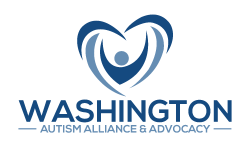Facebook-f
Twitter
Envelope
Back to Library
-
Parent and Educator Resource Guide to Section 504 in Public Elementary and Secondary SchoolsPublished by the U.S. Department of Education’s Office for Civil Rights in December 2016.
This resource guide is intended to help parents of students with disabilities understand the obligations imposed under Section 504. In particular, the resource guide summarizes key requirements of Section 504, and aims to increase understanding of these requirements for both parents and members of the school community. It includes scenarios that may help one understand when services should be provided, or when a student should be referred for special education. -
OSEP DEAR COLLEAGUE LETTER on Free and Appropriate Public Education (FAPE)Sent by the U.S. Department of Education’s Office of Special Education Programs on November 16, 2015. This letter clarifies that individualized education programs (IEP) for children with disabilities must be aligned with state academic content standards for the grade in which a child is enrolled.
-
Identification of Students with Specific Learning DisabilitiesThis guidance was published by the Office of Superintendent of Public Instruction (OSPI) in December 2014. It’s purpose is to help school personnel identify students with specific learning disabilities. It explains the required components for determining eligibility and contains the discrepancy table that must be used by districts when severe discrepancy is used to determine eligibility.
-
OSERS Letter to Dr. Jim Delisle, Re: Children with disabilities with high cognitionSent by the Director of the Office of Special Education Programs on December 20, 2013. This letter provides clarification of the Individuals with Disabilities Education Act (IDEA) and its implementing regulations as they apply to children who have high cognition and who may have specific learning disabilities (SLD), otherwise known as “twice exceptional students” or “2E students.”
-
OSERS Memorandum Re: Letter to DelisleThis Memorandum, issued on April 17, 2015 by the Office of Special Education Programs, requests the Letter to Delisle be widely distributed to remind educational agencies of their obligation to evaluate all children, regardless of cognitive skills, suspected of having one of the 13 disabilities outlined in 34 CFR §300.8.
-
U.S. Department of Education 2010 Letter Regarding Students with High CognitionThis letter was issued by the Acting Director of the Office of Special Education Programs on January 13, 2010. It is similar to the Letter to Delisle in that it addressed the need to evaluate students with high cognition and determining eligibility for special education. This letter includes additional information specific to children with ADHD, Asperger’s Syndrome, and specific learning disabilities, who struggle to timely complete grade-level work and have difficulties with organizational skills, homework completion, affective areas, social skills, classroom behavior, reading and math fluency, writing and math operations.
-
Sample accommodations and modifications:
- Access/Use of a hood for emotional regulation
- Adult check for understanding of critical directions in core classes
- Adult or self-directed breaks
- Break down assignments / materials into manageable parts
- Modified Class Assignments/Homework
- Sentence Frames/Sentence starters and graphic organizers for writing assignments
- Extra time to complete written assignments when effort is shown
- Frequent breaks during testing period
- Preferential seating, near the instructor and/or positive peers
- Provide positive, descriptive feedback immediately when following expectations
- Reminders to get started on classwork
- Reminders to turn in work
- Small group for testing
- Visuals/written expectations paired with short, concise verbal directions
